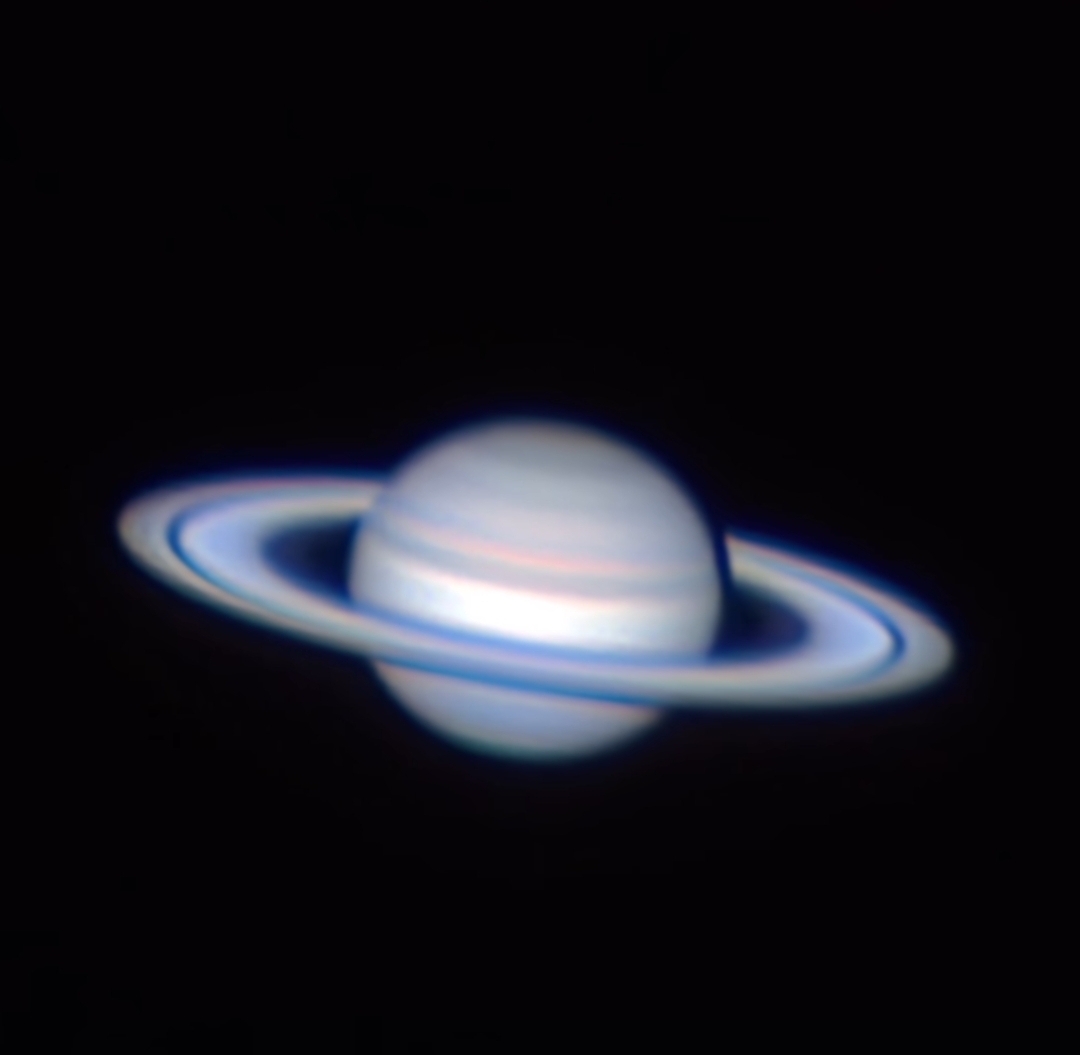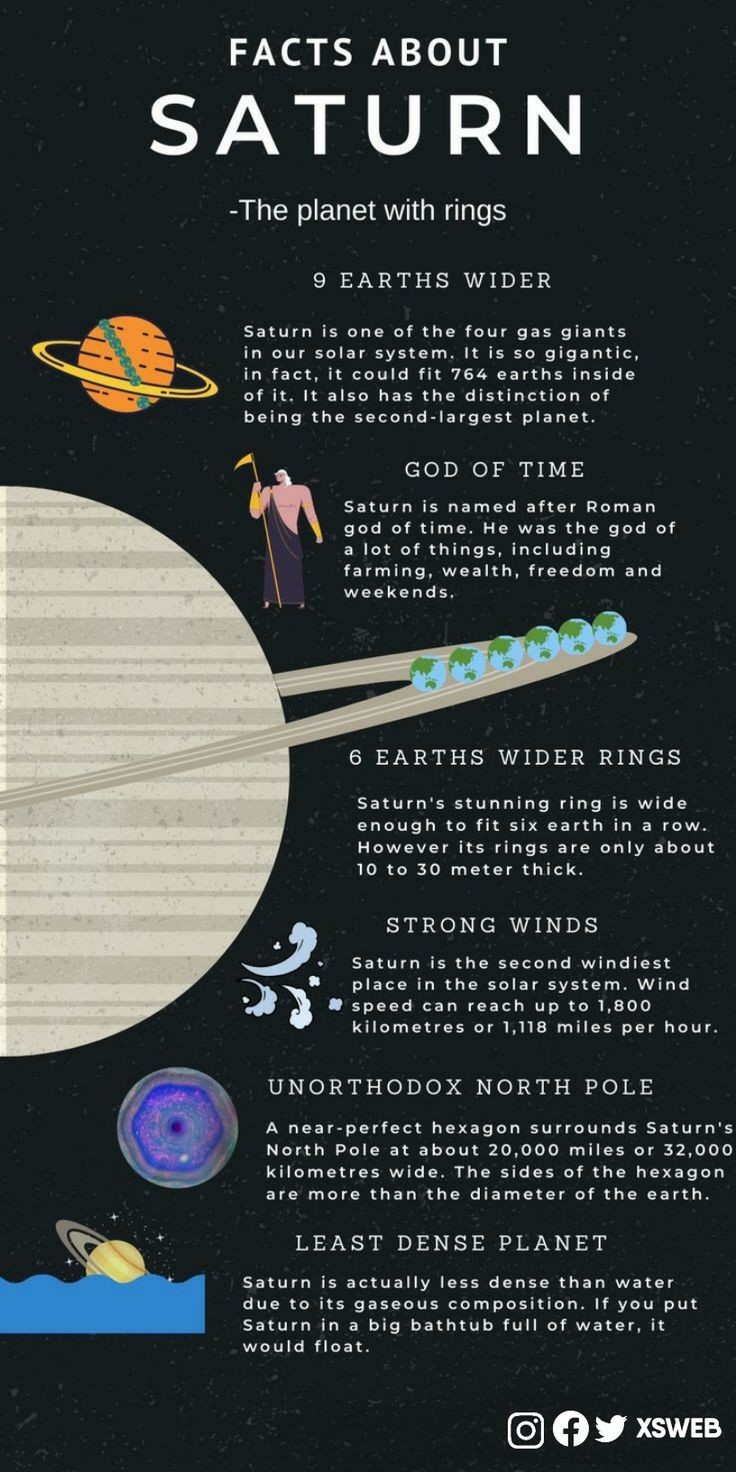Home > Sections > The Universe > Saturn
Last Updated: 14th June 2023
ARCHIVED ITEM: this page is no longer updated.
Saturn
Keywords
Saturn, gas giant, rings, ice blocks, moons, satellite, Titan, Enceladus, geysers, metallic hydrogen, molecular hydrogen, radiation, hexagonal pole.
Introduction
Saturn is the second largest planet in the Solar System, and the sixth planet. It is endowed with beautiful rings that surround the middle latitude of the planet, which move as the seasons on Earth change. You can look at the planet through a telescope and see it very clearly with the right zoom.
Planet Features
Size: Saturn is the second largest planet, after Jupiter, but it is also the lightest. If you placed the planet next to Earth, it would present as being 9 times the size of our fair planet. And the rings that surround the planet are also larger than Earth. If you placed Earth on the edge of the ring, and duplicated it, you would have to do this 6 times.
Visual Appearance: A dull yellow orange in the sky, with the yellowing rings visible to the even the naked eye, Saturn is a large appearance in the night sky. When you look through a telescope, you can clearly see the rings around the planet, and they move depending on the day you look at them. They can appear flat, or thin.
Saturn has many moons. In fact, over 40% of satellites are in orbit around Saturn. One of the moons, Enceladus, has giant geysers that feed the rings of Saturn, which are mostly blocks of ice.
Interesting fact: Titan, one of Saturn's moons is the second largest in the Solar System, after Jupiter's Ganymede. It is also bigger than Mercury.
Structure: Being a gas giant, Saturn is made up of a small rock core, a layer of ice, a layer of metallic hydrogen (which is in a state of liquid), molecular hydrogen and an atmosphere of various gases. Because of it's makeup, Saturn is able to produce heat, and gives off more heat radiation that it receives from the Sun.
Name: the name Saturn comes from the Roman god of time, Saturn, who was Jupiter's father in the mythology. Saturn was also a god of other items, such as agriculture, wealth and freedom.
More: Saturn has an unorthodox North pole. It is hexagonal. About 20,000 miles (32,000 kilometres) wide, it sits at the top of the planet. If you were to place Saturn in a bowl (pretty big bowl, mind) of water, it would float. This is because of it's gaseous nature. Saturn is also on an elliptical orbit around the Sun, like Mars and other celestial objects.
Here is a YouTube video from National Geographic on Saturn:
Footnotes
[1]What Saturn looks like in space, image courtesy  NASA.
NASA.
[2]Saturn seen from a telescope, image provided by  Rami Ammoun.
Rami Ammoun.




 Earth
Earth



